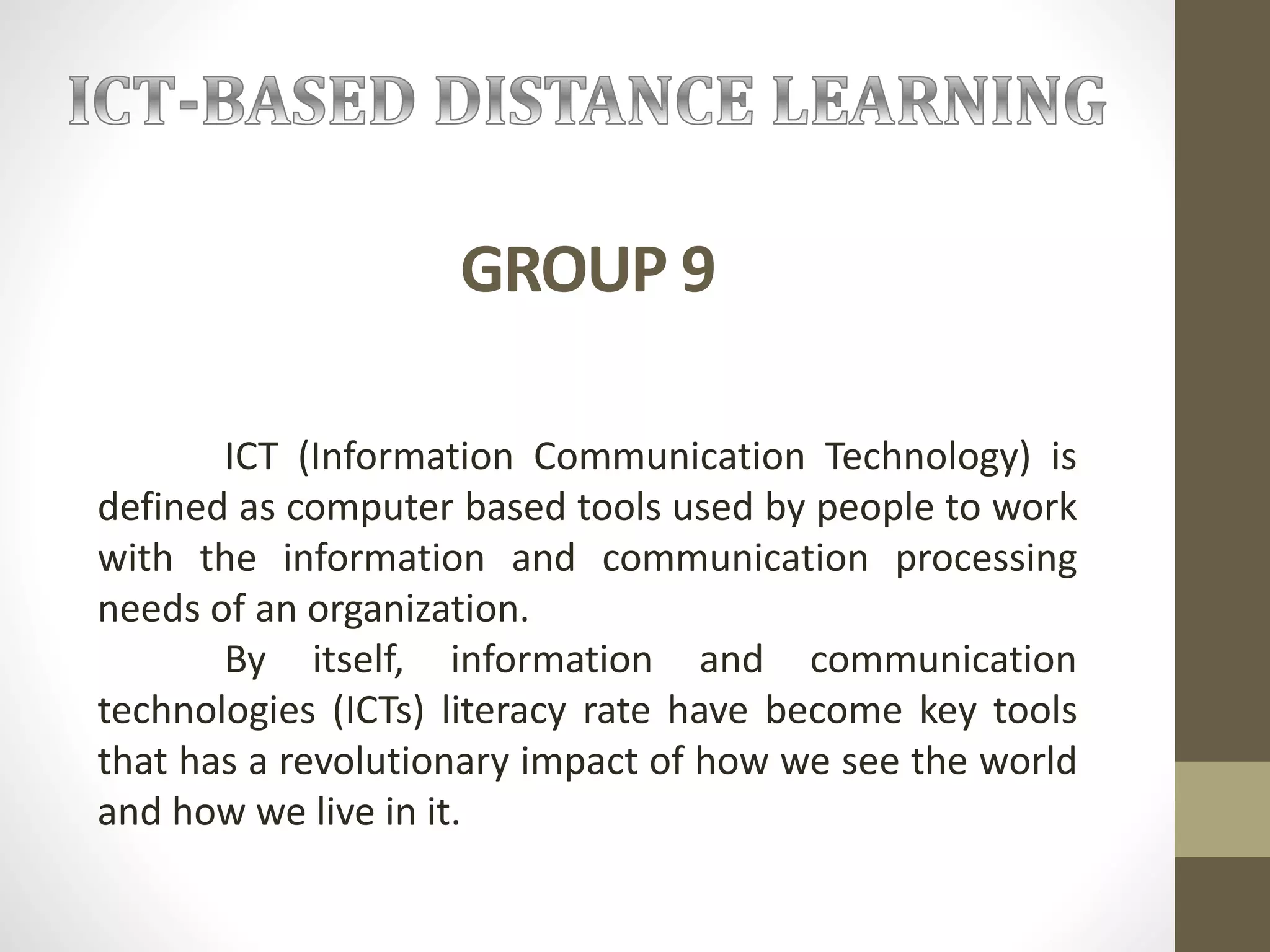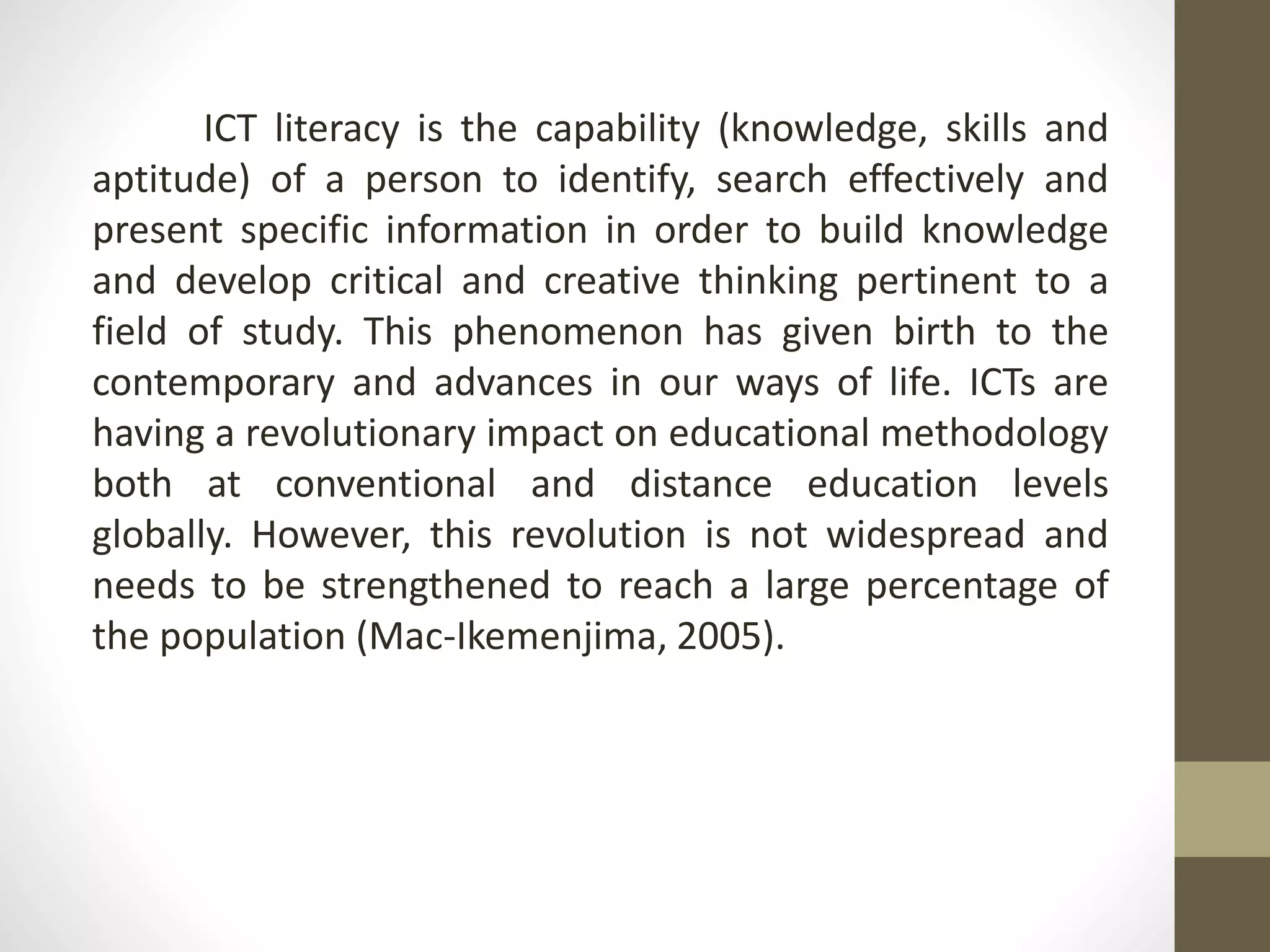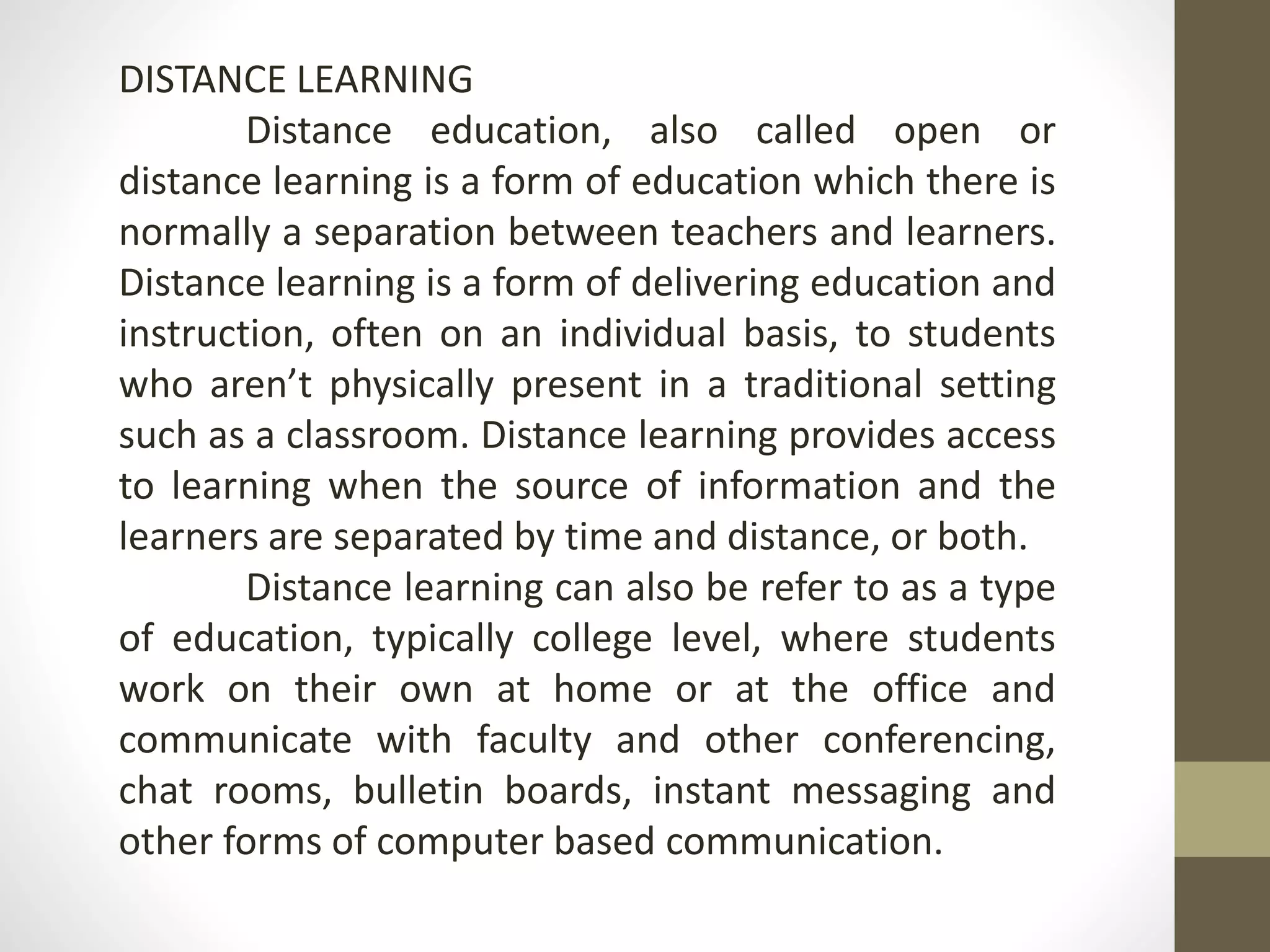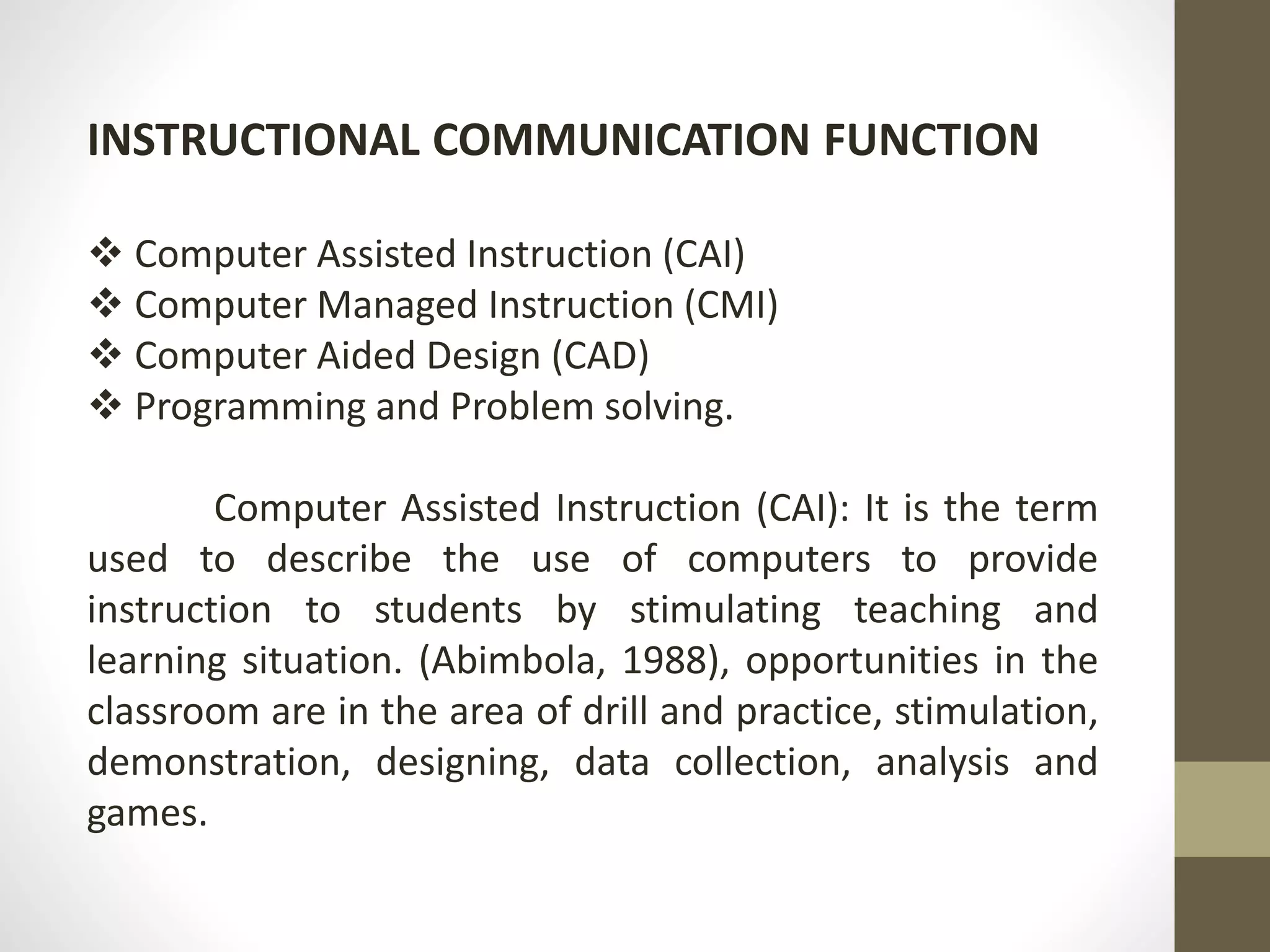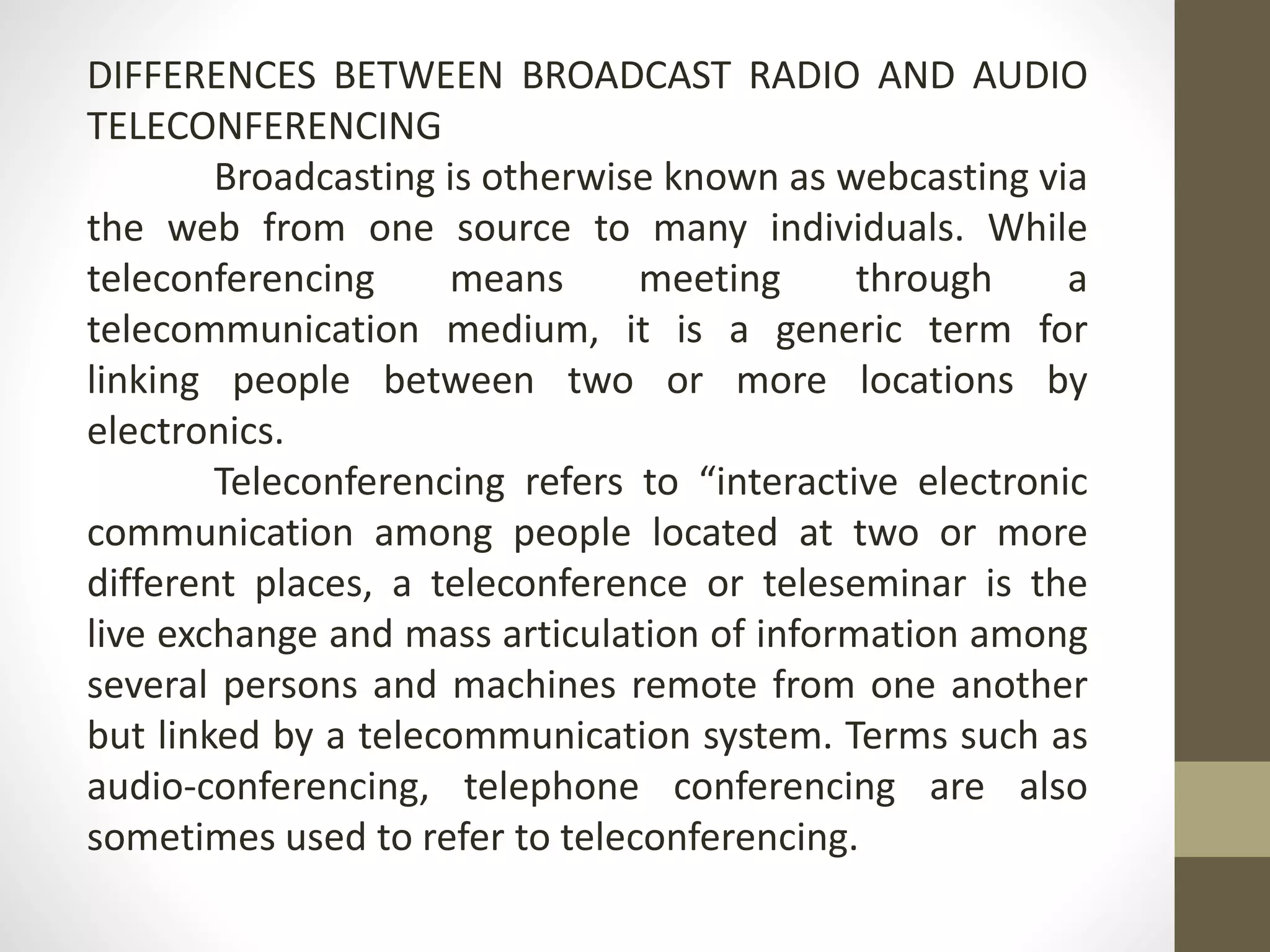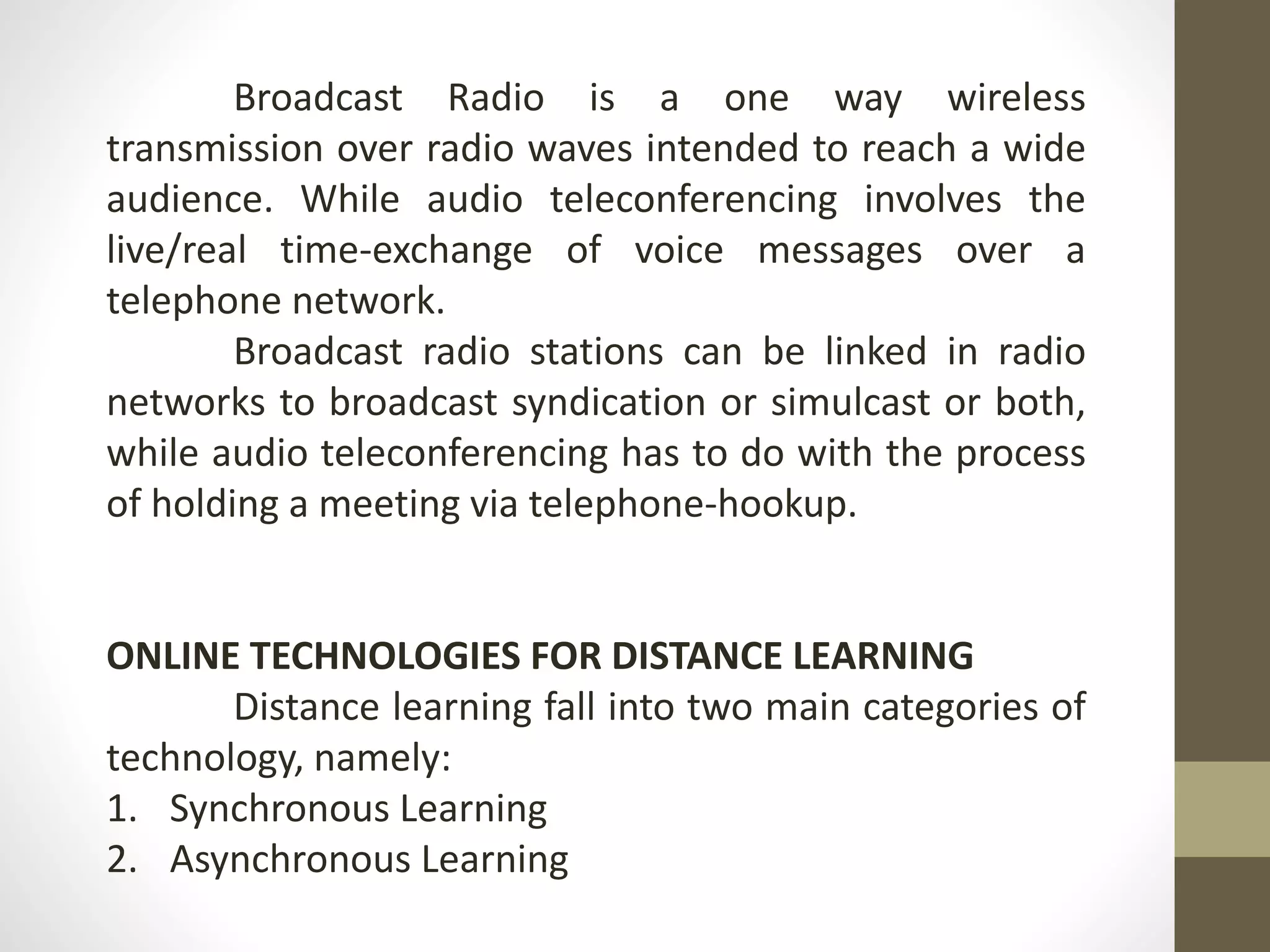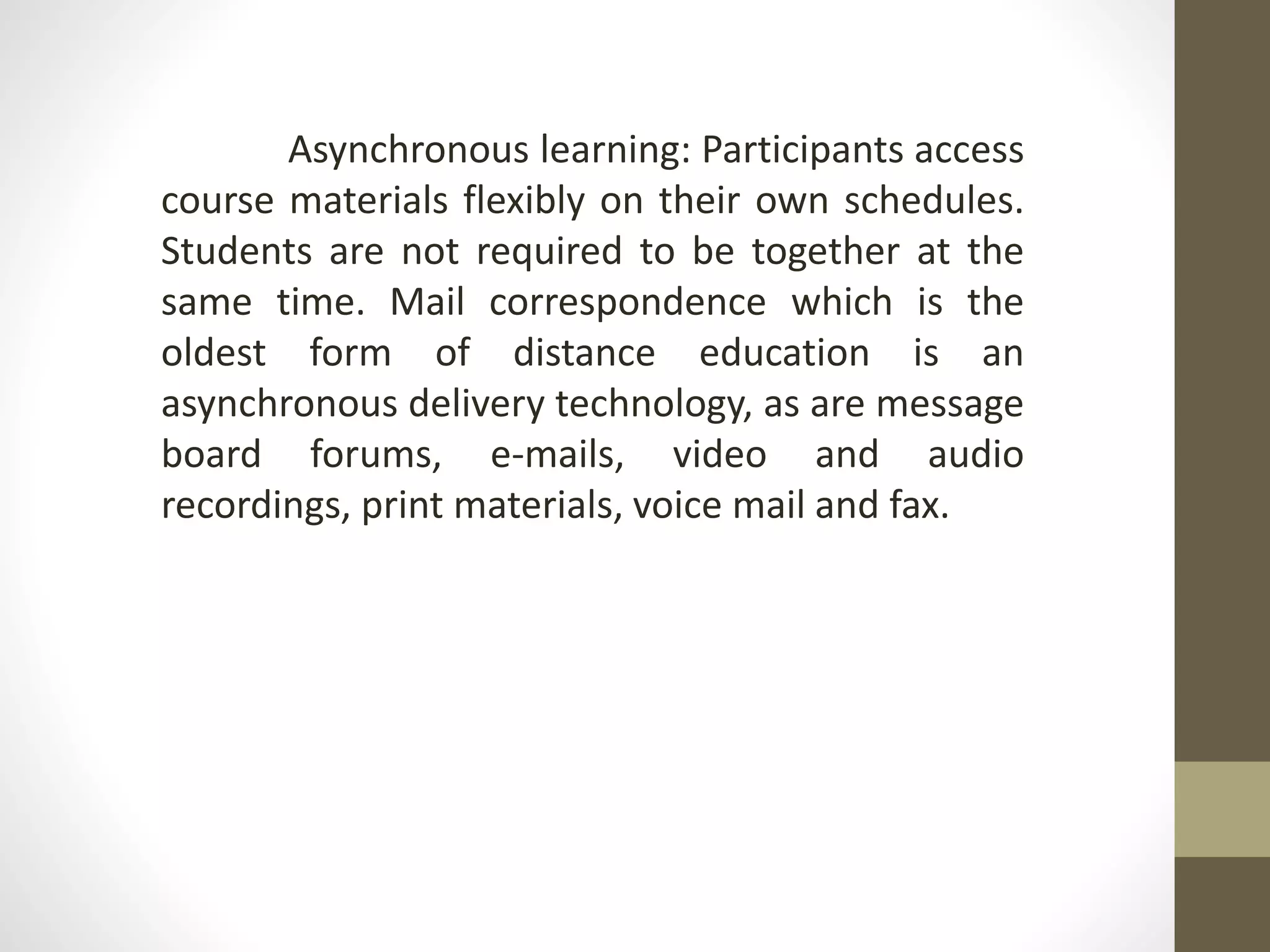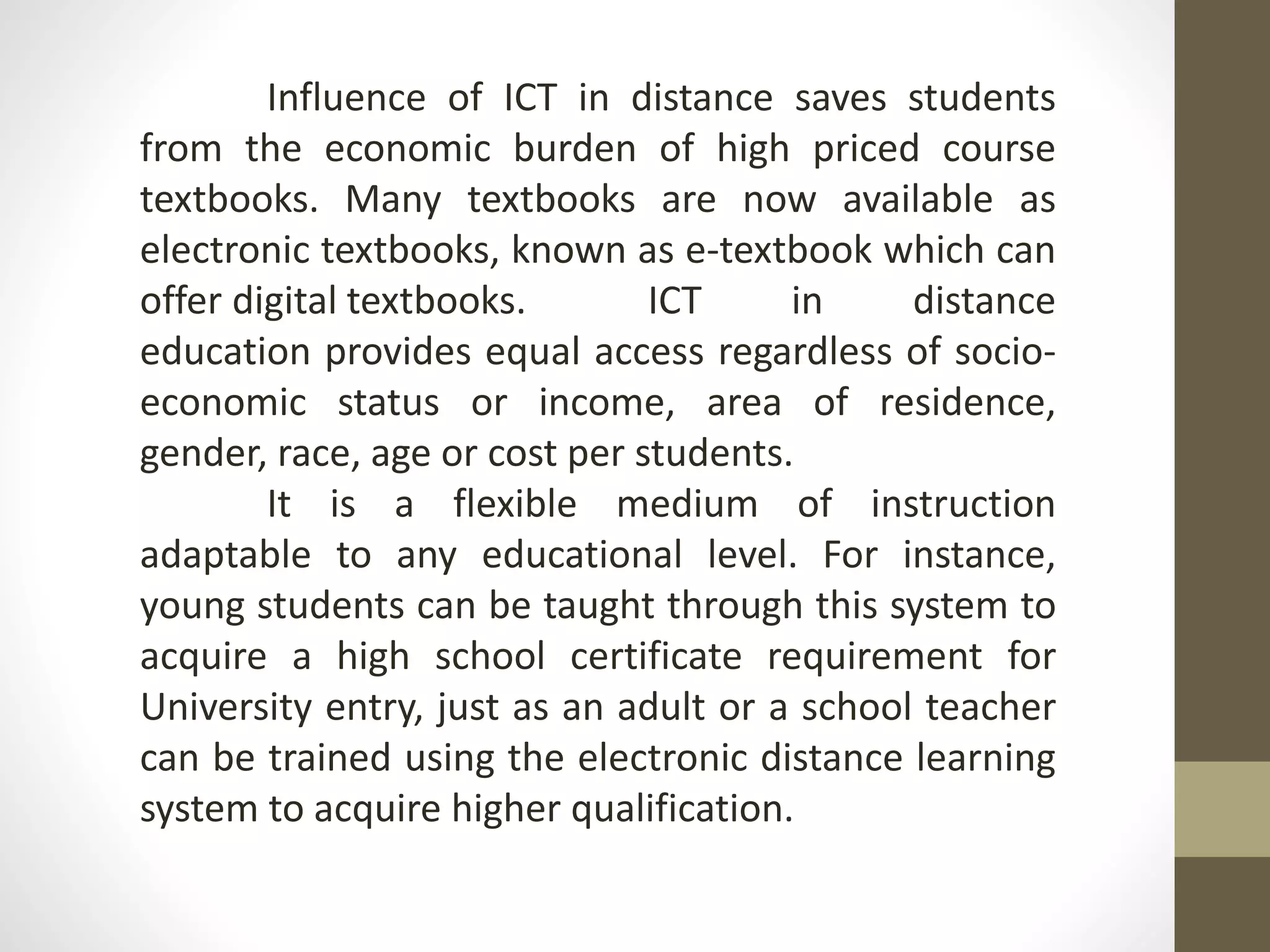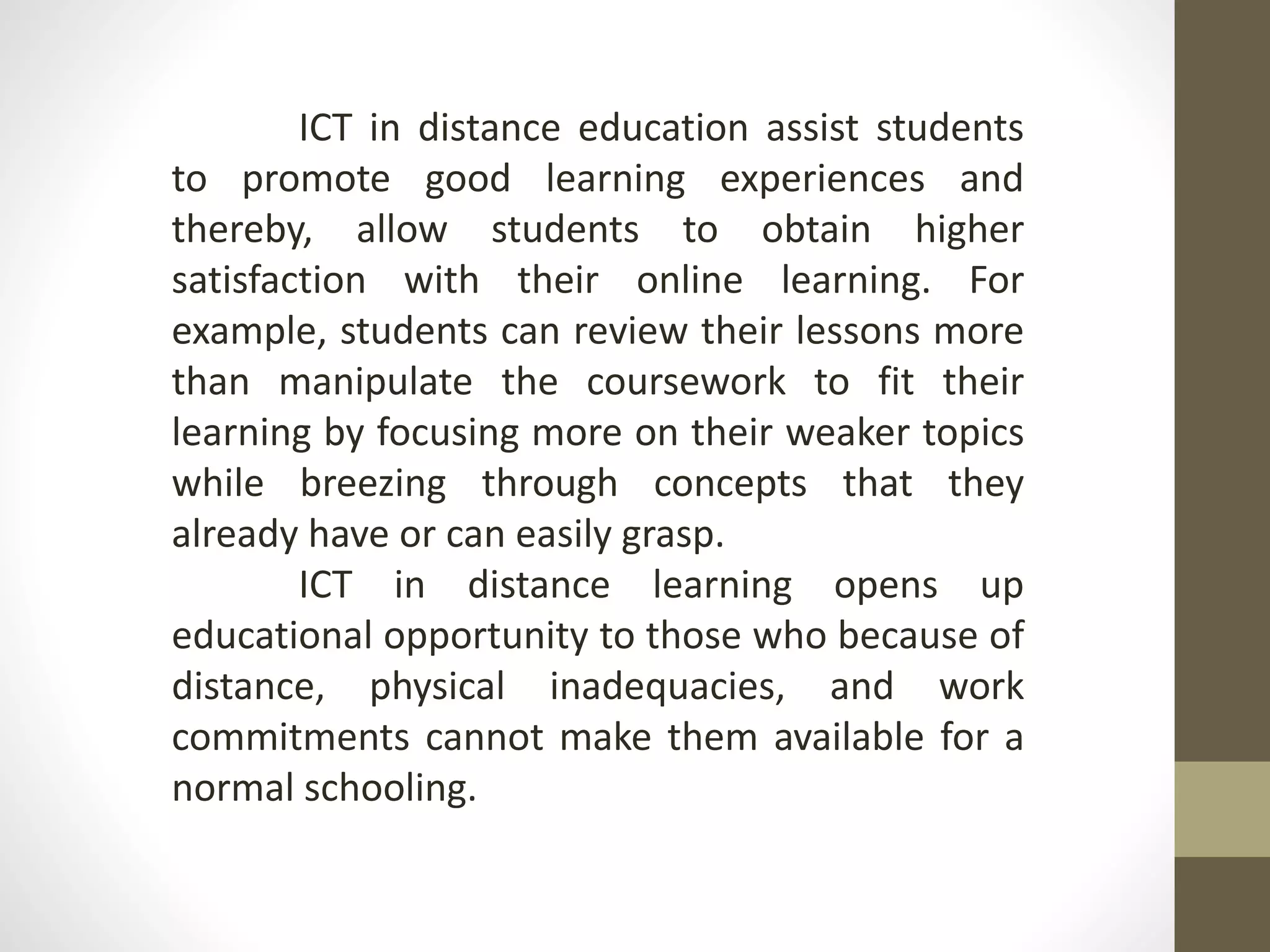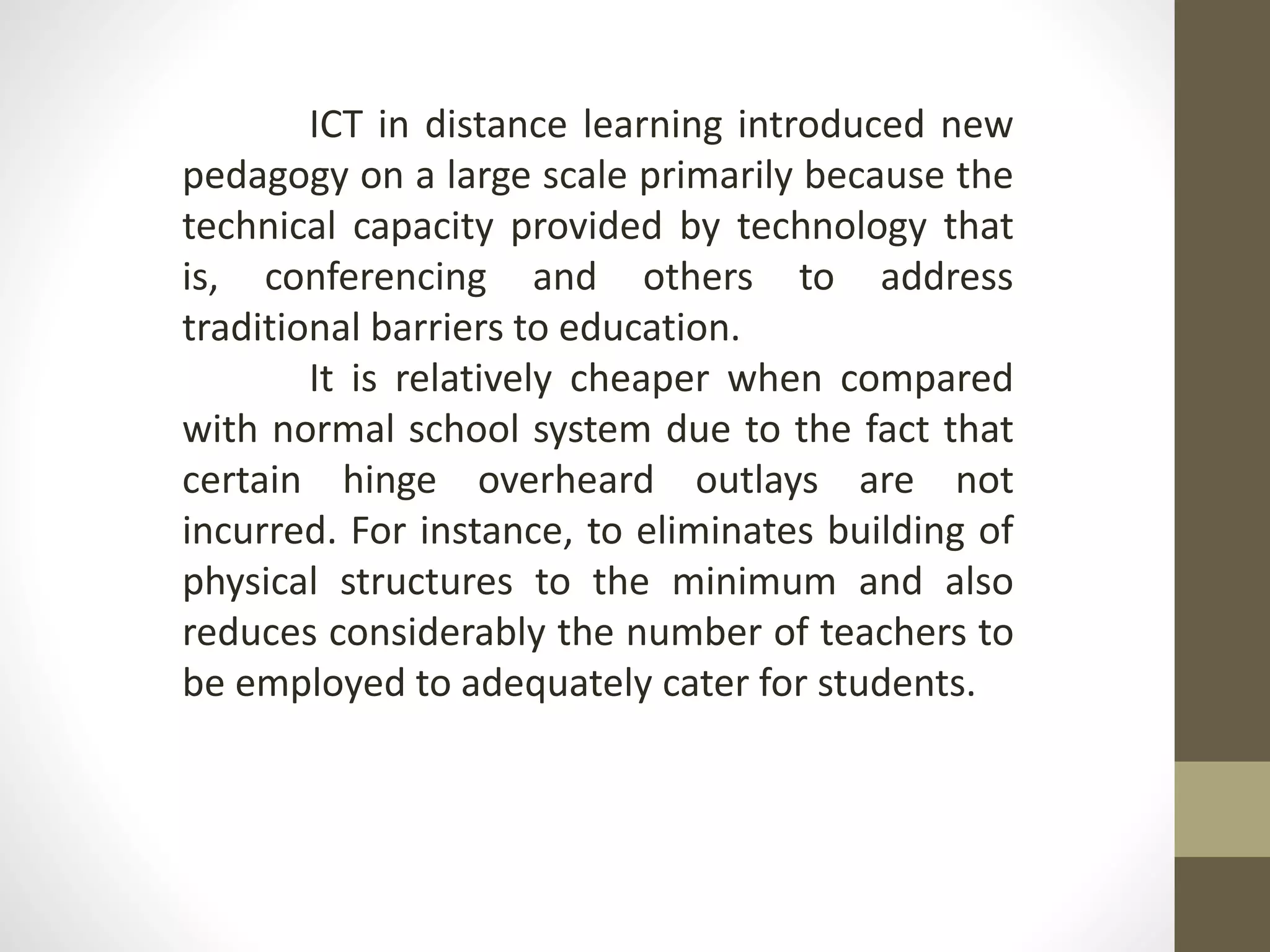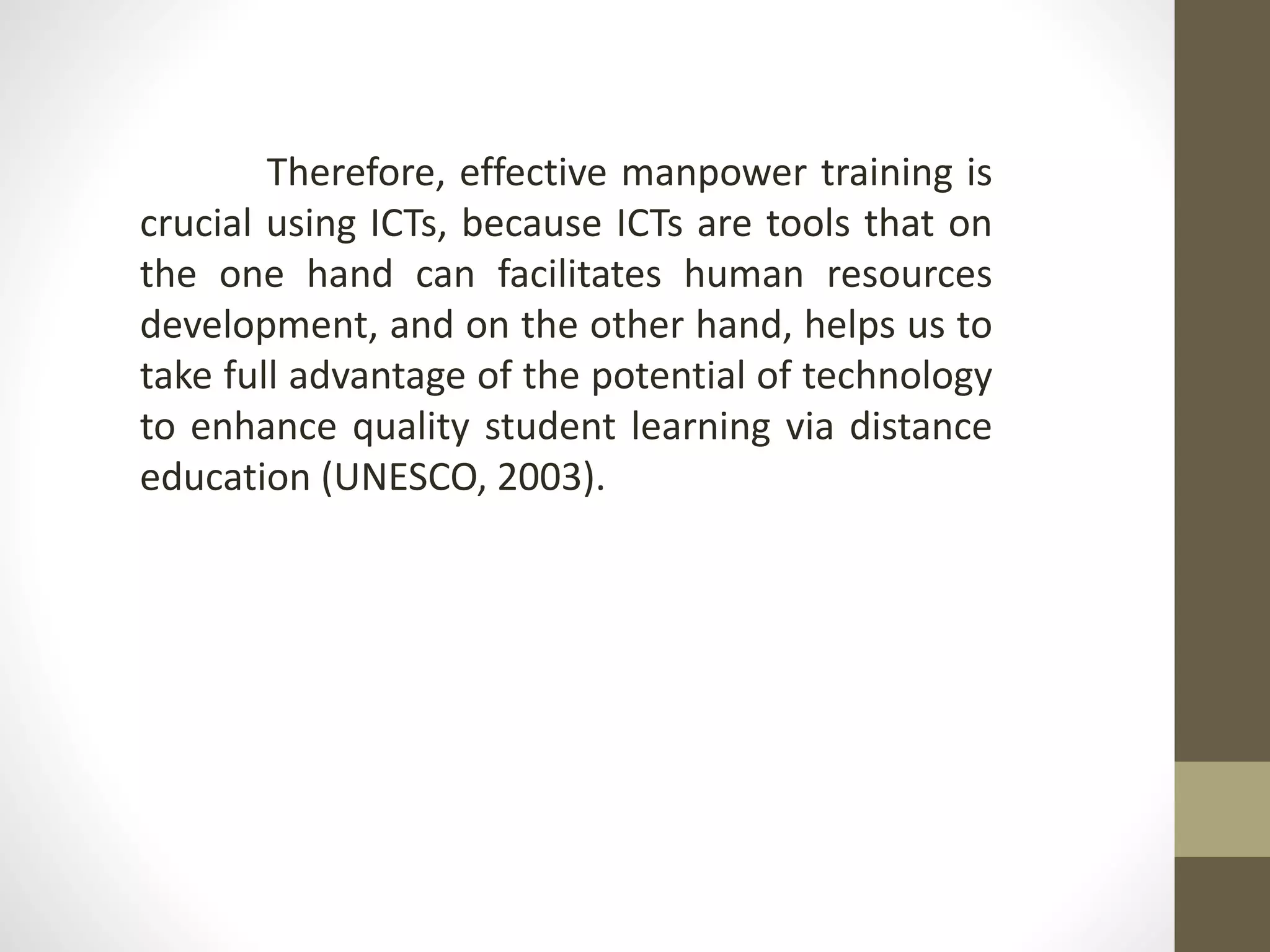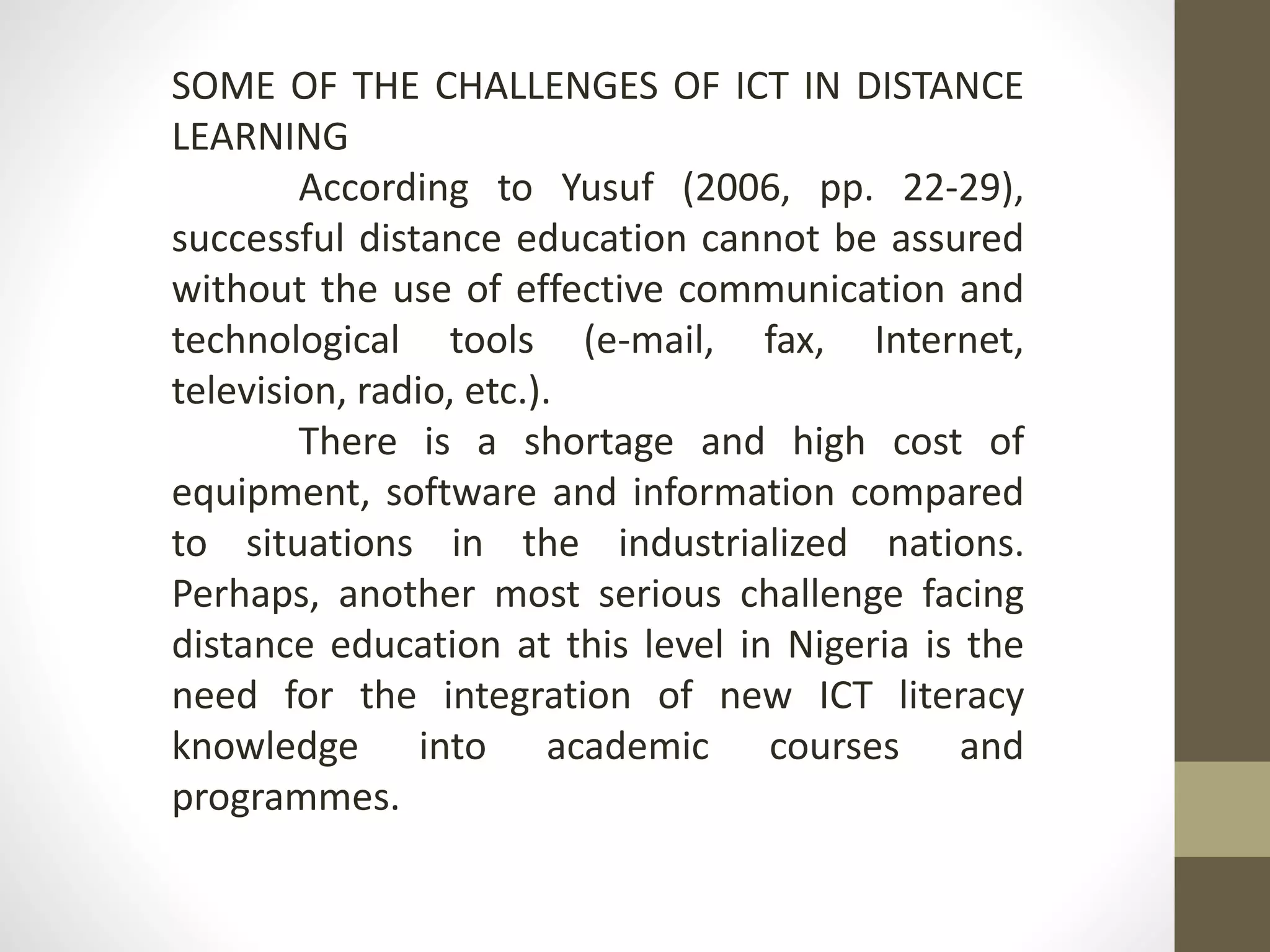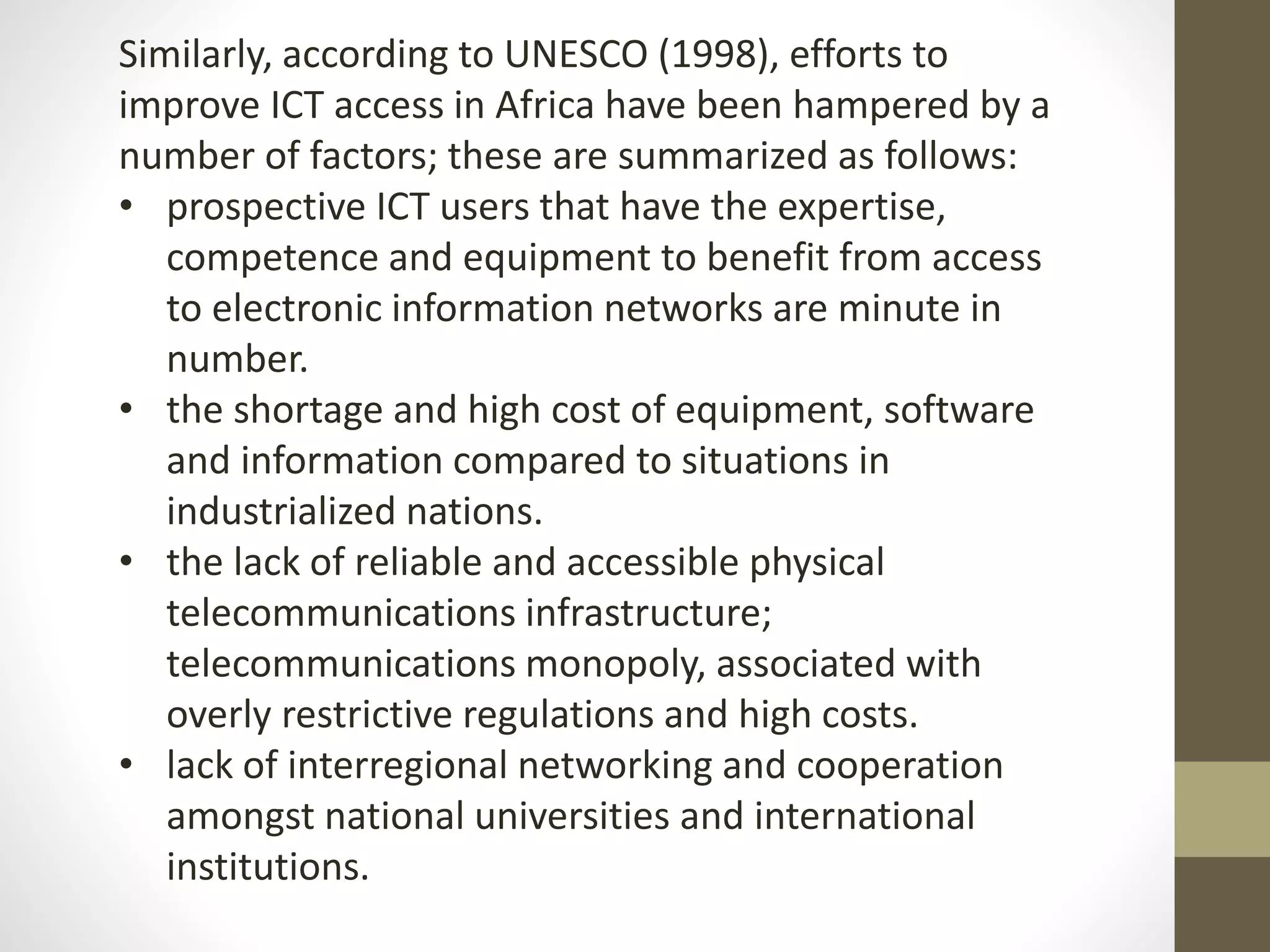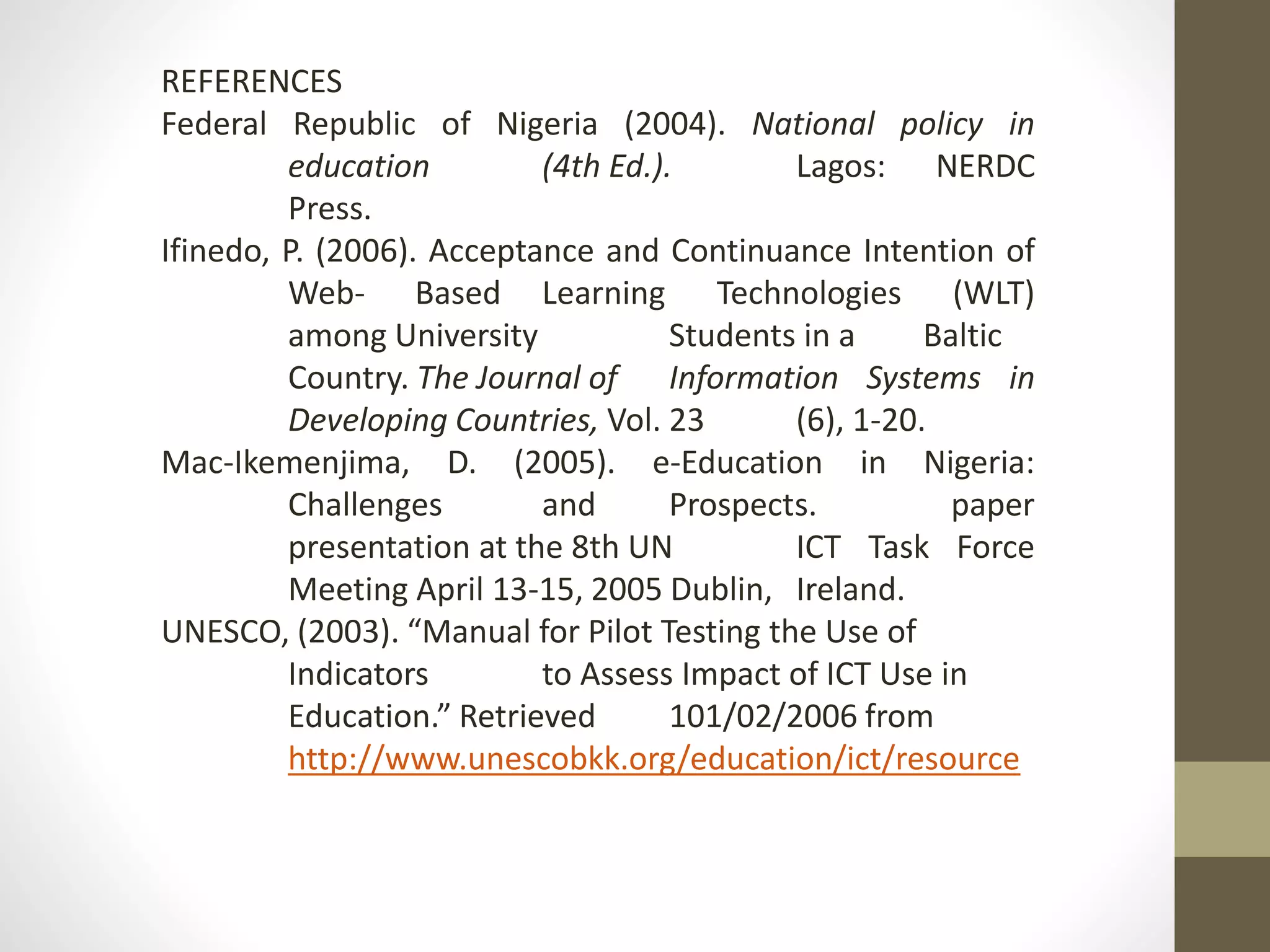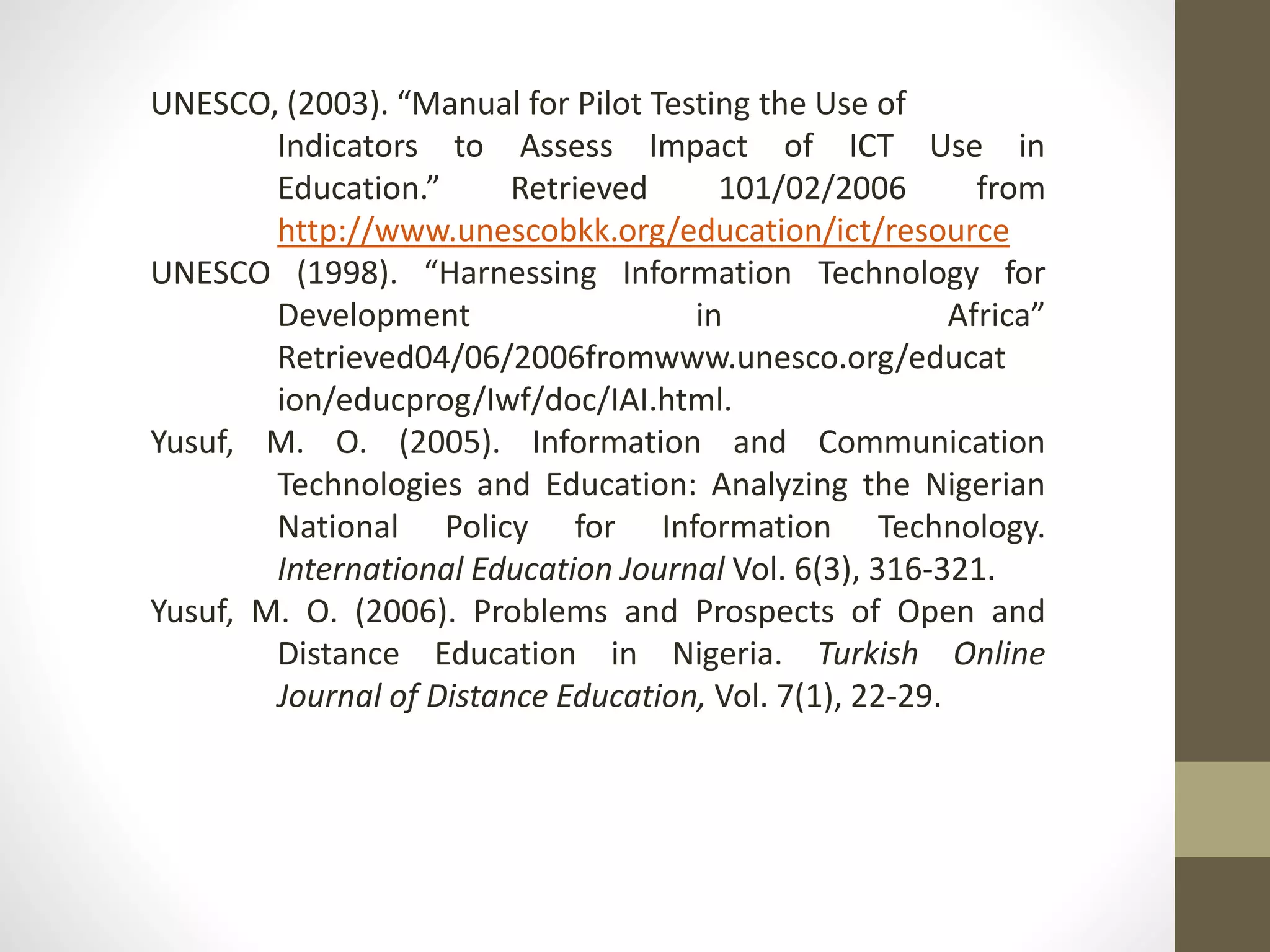This document discusses the use of information and communication technologies (ICTs) in distance learning. It defines ICT literacy and explains how ICTs have revolutionized education methodology. It describes different types of distance learning technologies, including synchronous technologies like video conferencing and asynchronous technologies like message boards. The document also discusses the relevance and challenges of using ICTs in distance education, noting that they provide more flexible access to learning but face issues like lack of infrastructure in some areas.
